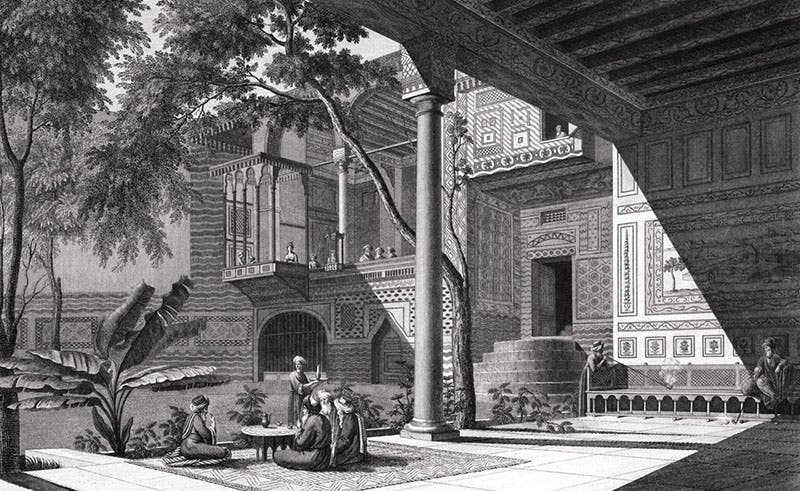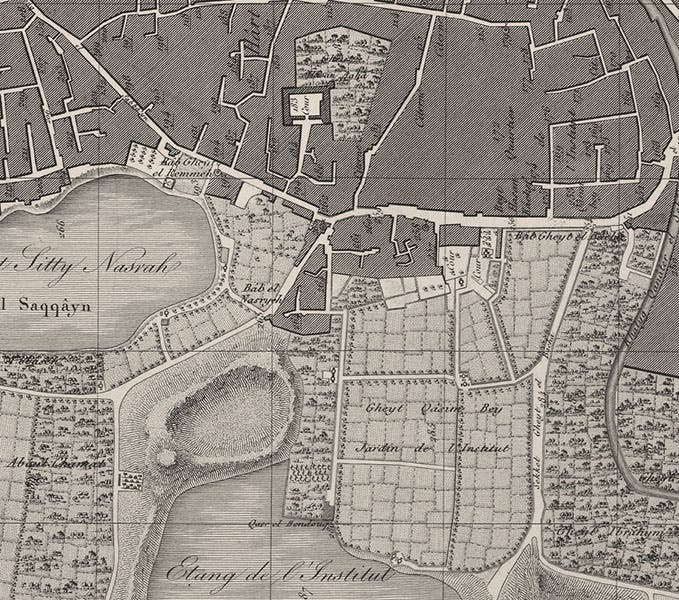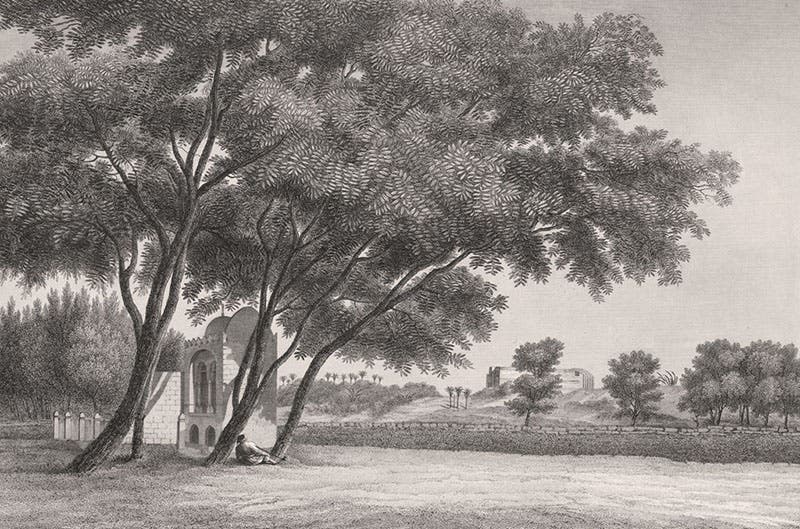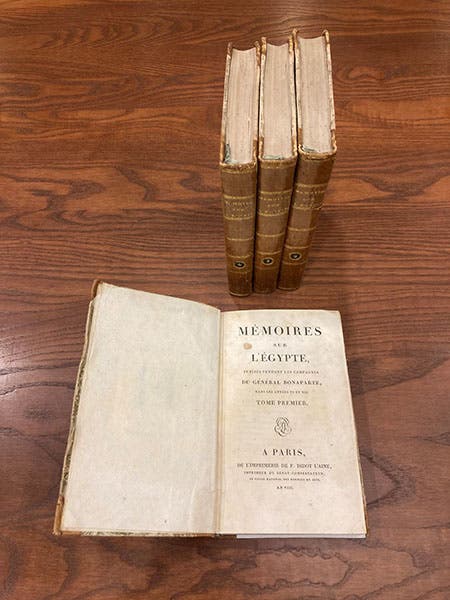Scientist of the Day - The Institute of Egypt
When Napoleon invaded Egypt in July of 1798 with 54,000 soldiers and sailors, his immediate problem was gaining control of Cairo, which he effectively did with the Battle of the Pyramids on July 21. But he also brought along some 150 savants – naturalists, engineers, scholars, and artists – to study, measure, and draw Egypt, and to aid them in their work, and to record it, he had already determined to found a scientific institute in Egypt – a counterpart to the National Institute of France back home in Paris (of which Napoleon was a proud member).
No soon had they established control over Cairo than Napoleon charged his top aides, General Caffarelli, Claude Berthollet and Gaspard Monge, with the task of setting up the Institute of Egypt. They established four sections – physics, math, the arts, and political economy – with a maximum of 12 members in each section. Many members were savants, but members of the military were also included. To house their meetings and laboratories, they took over the palaces and gardens of Hasân Kâchef and Qasim Bey, two Mamalukes who had fled to upper Egypt after the battle of the Nile. Their residences were in a plush section of Cairo, with the gardens lying along the Nile.
The Institute of Egypt met for the first time on this date, Aug. 23, 1798, in the harem room of the palace of Hasân Kâchef. The event was captured on paper by Jean Protain, one of the artists, who can be seen sketching in the back (first image; see fourth image for detail). Nearly every one of the persons shown can be identified, beginning with Napoleon, who was elected vice-president of the Institute at this first meeting (Gaspard Monge was elected president). In the detail (fourth image), that is Nicolas-Jacques Conté, with the eye-patch, just to the right of Napoleon, with General Caffarelli (on the wooden leg) and the geologist Deodat de Dolomieu (the tall one) bringing up the rear.
Napoleon took an active role in the meetings of the Institute. At the very first meeting, he provided a list of six questions he would like investigated and answered, such as: can you make beer without hops (Egypt had no hops); can we learn from the Egyptians a better way to bake bread; can we purify water from the Nile? The proceedings of the Institute meetings were published, first in a local serial, La Décade égyptienne, and then in the Mémoires sur l'Égypte, which made it through four volumes before the British defeated the French, grabbed the Rosetta stone, and ended the adventures of the savants in Egypt. We have a handsome set of the Mémoires sur l'Égypte in our vault, where it sits right next to the 10 text volumes of the Histoire scientifique et militaire de l'expédition française en Égypte (1830-36), by Louis Reybaud, whom we profiled just last week. We removed the 4 volumes of the Mémoires temporarily for a photograph (seventh image).
When the savants finally published the monumental Description de l’Égypte (1809-28) (you can see a photo of the complete set in our post on Edme Jomard, 6th image), they included many illustrations of the palaces and gardens of Cairo where the Institute met, as well as several maps, and Protain’s drawing of the first meeting of the Institute of Egypt. We have chosen from those to illustrate our post today.
William B. Ashworth, Jr., Consultant for the History of Science, Linda Hall Library and Associate Professor emeritus, Department of History, University of Missouri-Kansas City. Comments or corrections are welcome; please direct to ashworthw@umkc.edu.













